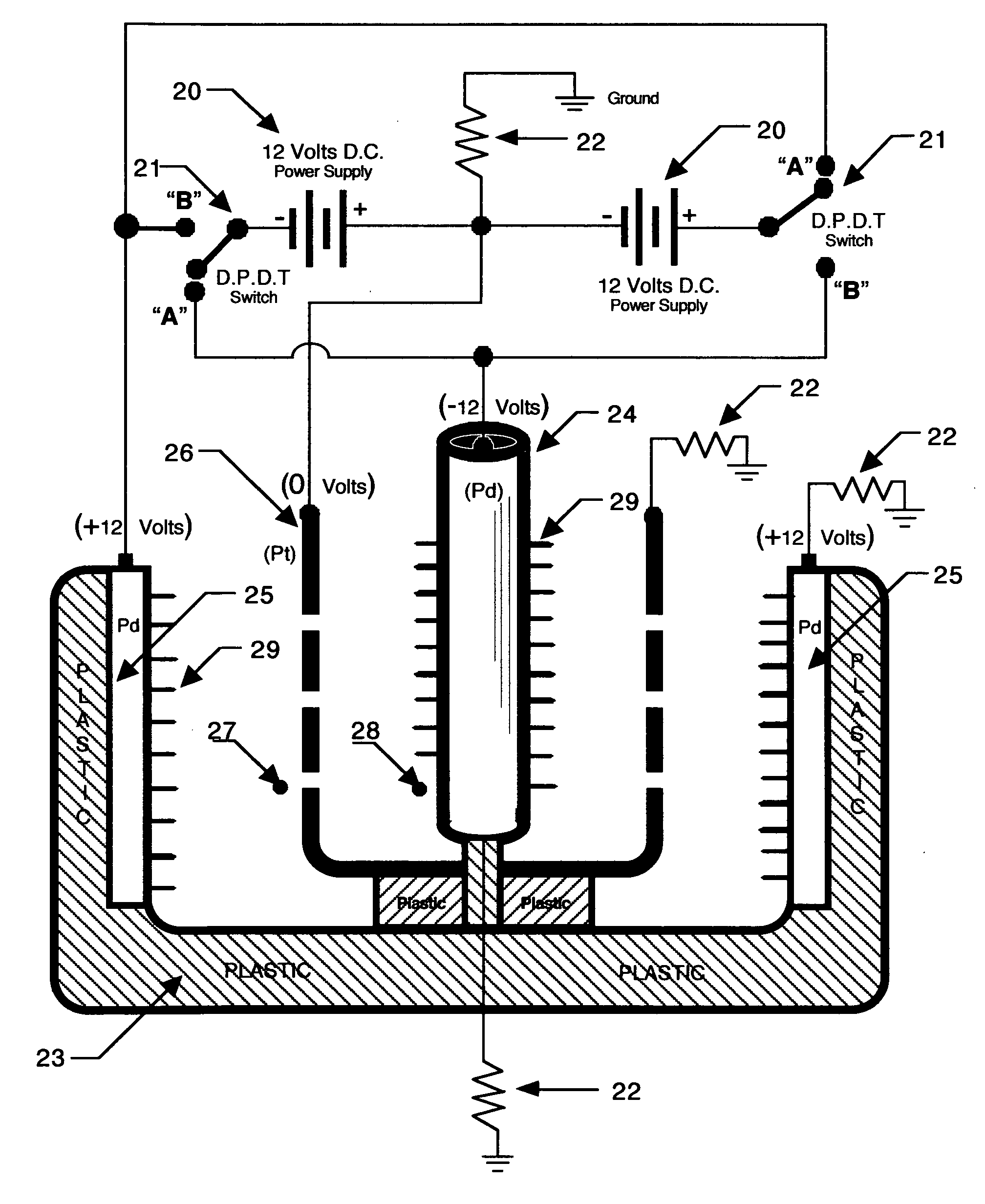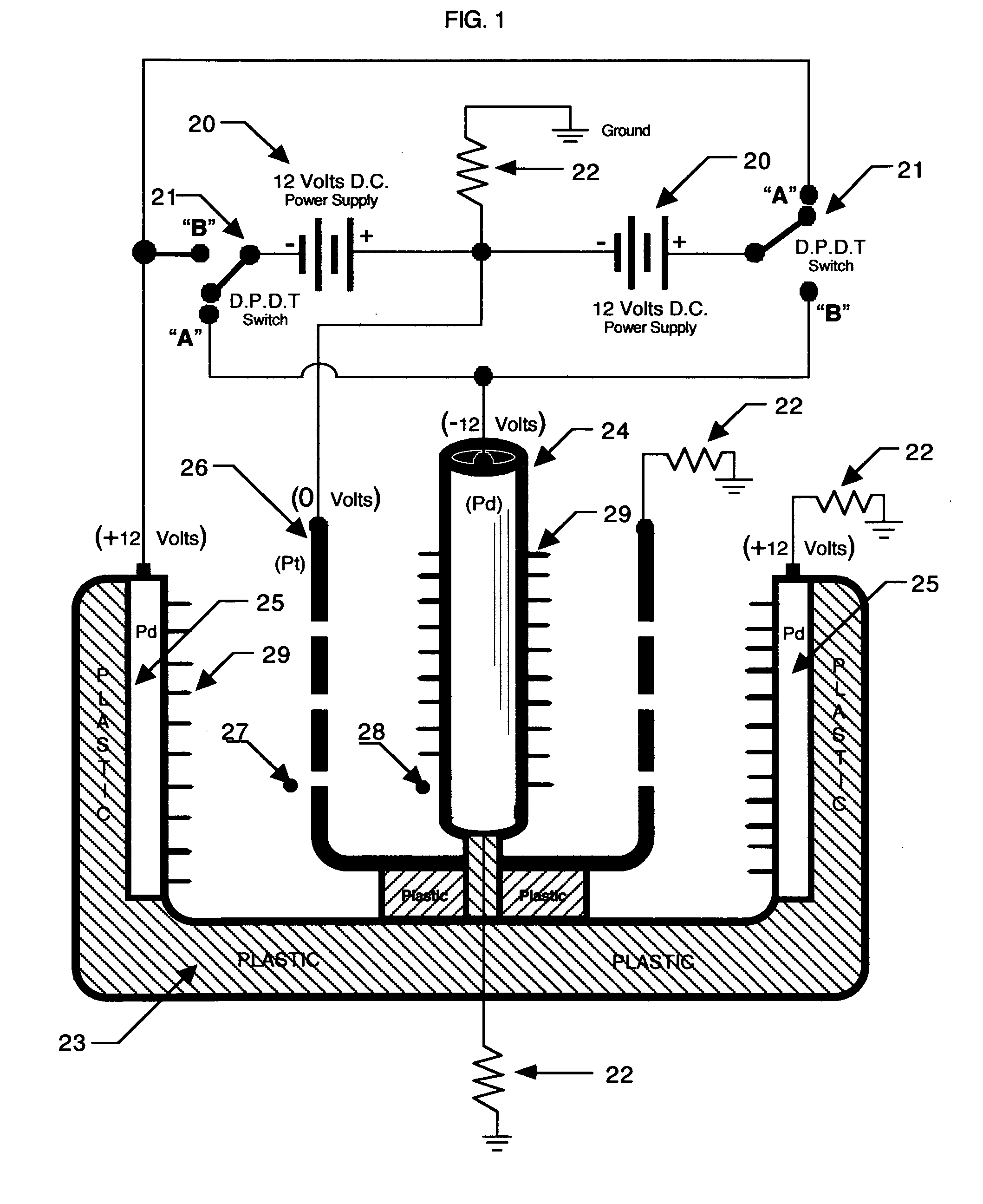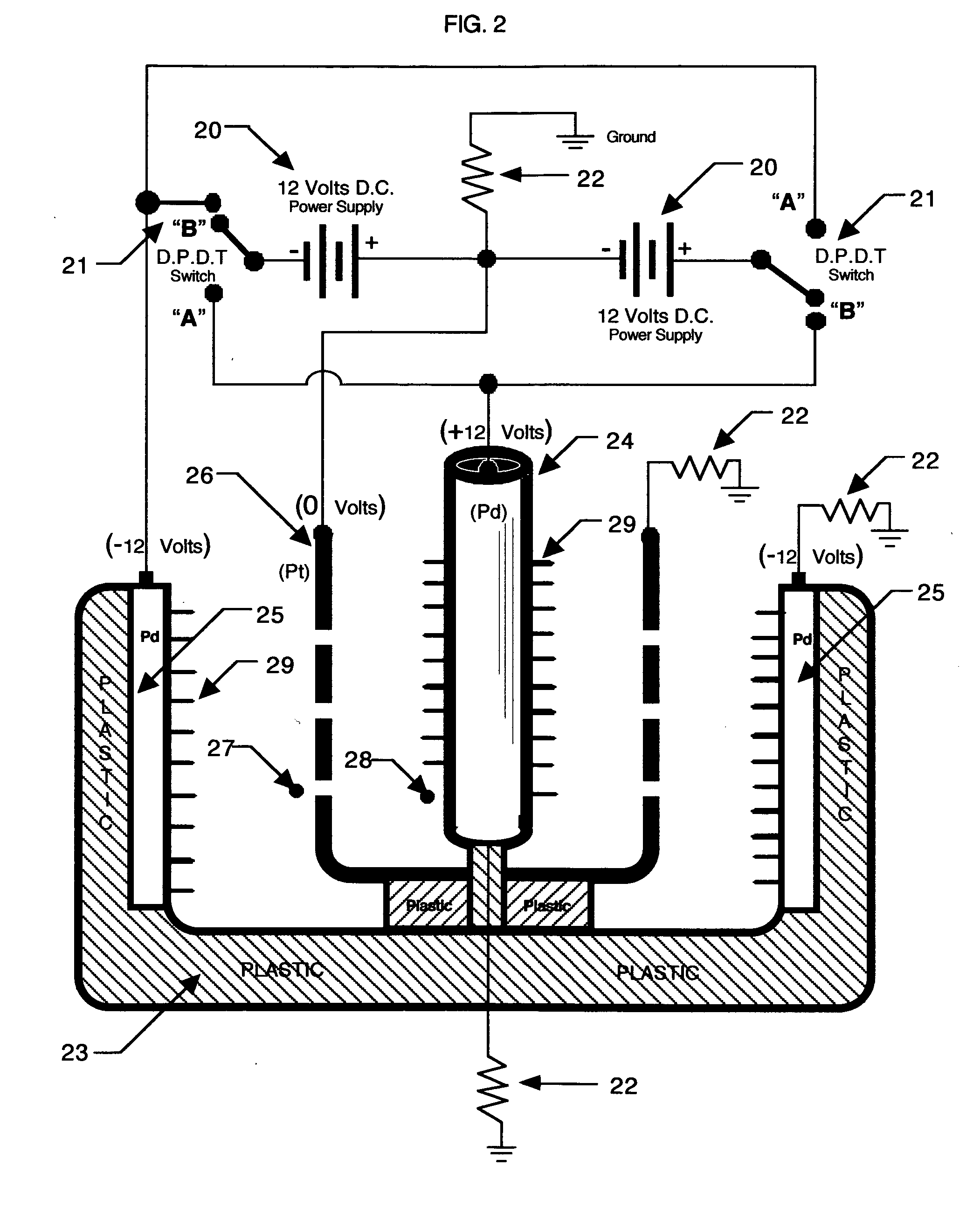Tamian fusion cell
a fusion cell and fusion technology, applied in nuclear reactors, nuclear engineering, greenhouse gas reduction, etc., can solve the problems of accumulation of deposits on the negative palladium electrode, other researchers and experimenters cannot reproduce any consistent fusion results using their data,
- Summary
- Abstract
- Description
- Claims
- Application Information
AI Technical Summary
Benefits of technology
Problems solved by technology
Method used
Image
Examples
Embodiment Construction
[0010]The Tamian Fusion Cell is a uniquely designed electrolytic cell that promotes the process of deuterium-fusion. The cell consists of an outer cylinder lining of palladium (Pd) 25, a middle cylinder of platinum (Pt) 26, and a central electrode post of palladium (Pd) 24. The middle (Pt) cylinder is perforated, allowing for the electrolytic bath and ions to flow from the outer cylindrical (Pd) lining through the outer bath chamber 27, through the inner bath chamber 28 to the center (Pd) electrode post and vice versa. A dual-polarity, direct current power supply 20 is connected to the cell by either a “double-pole double-throw” (D.P.D.T.) switch 21 or by an integrated timing circuit (not shown). The purpose of the (D.P.D.T.) switch or I.C. timing circuit is to periodically reverse the polarity of the cell's palladium electrodes, whereby controlling and maintaining a constant deuterium fusion reaction. The electrolyte is composed of (LiOD) lithium deuterium oxide, (H2O) water, heavy...
PUM
| Property | Measurement | Unit |
|---|---|---|
| heat resistant | aaaaa | aaaaa |
| polarities | aaaaa | aaaaa |
| frequency | aaaaa | aaaaa |
Abstract
Description
Claims
Application Information
 Login to View More
Login to View More - R&D
- Intellectual Property
- Life Sciences
- Materials
- Tech Scout
- Unparalleled Data Quality
- Higher Quality Content
- 60% Fewer Hallucinations
Browse by: Latest US Patents, China's latest patents, Technical Efficacy Thesaurus, Application Domain, Technology Topic, Popular Technical Reports.
© 2025 PatSnap. All rights reserved.Legal|Privacy policy|Modern Slavery Act Transparency Statement|Sitemap|About US| Contact US: help@patsnap.com



